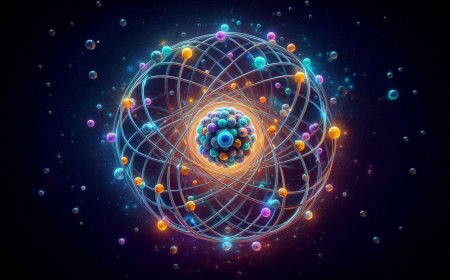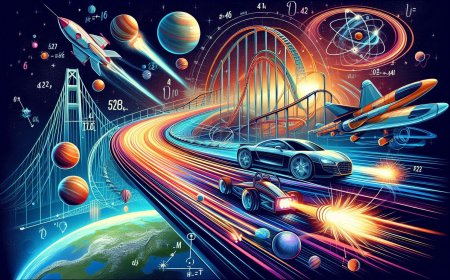Velocity: Understanding the Physics of Speed and Direction
Explore the concept of velocity in physics, differentiating it from speed and understanding its applications in engineering, astronomy, and sports. Learn about constant, variable, and instantaneous velocity.

In the fascinating world of physics, velocity is a fundamental concept that brings motion to life. While speed measures how fast an object is moving, velocity adds an important layer of detail by considering both speed and direction. This seemingly simple distinction has profound implications across a range of scientific and real-world applications, from predicting the paths of planets to designing safe transportation systems.
Defining Velocity
At its core, velocity is a vector quantity, meaning it has both magnitude (speed) and direction. Imagine a car speeding down a highway: if we say it’s moving at 60 miles per hour, we’re only describing its speed. However, if we say it’s moving at 60 miles per hour north, that’s its velocity. This directional component allows physicists and engineers to understand not just how fast something is moving but also where it’s headed.
Mathematically, velocity is expressed as:

where displacement, like velocity, is a vector that accounts for the change in position along a specific direction. Thus, velocity depends on the shortest path between the starting and ending points, rather than the total path traveled.
The Difference Between Speed and Velocity
While speed is a scalar quantity, velocity’s vector nature introduces unique characteristics. For example, a car moving in a circular path at a constant speed actually has a changing velocity because its direction is constantly shifting. This is why athletes running on a track or planets orbiting a star have constant speed but variable velocity — their direction changes even if their speed remains steady.
Types of Velocity
- Constant Velocity: When both speed and direction remain unchanged, an object is said to have constant velocity. This only happens in ideal scenarios, such as objects moving in a straight line without external interference.
- Variable Velocity: When there’s a change in speed or direction (or both), the object experiences variable velocity. This is common in the real world, as objects often encounter friction, gravity, or other forces that alter their path or speed.
- Average and Instantaneous Velocity: Average velocity gives an overall view by dividing total displacement by total time. Instantaneous velocity, however, is more specific, measuring the exact speed and direction of an object at a particular moment. This concept is crucial in fields like calculus and physics, where we need precise data on an object’s motion.
Why Velocity Matters in the Real World
Understanding velocity is crucial for a variety of applications. In engineering, it helps design everything from cars to roller coasters, ensuring that vehicles move safely and efficiently. In astronomy, it allows scientists to track celestial bodies and predict their future positions. Even in sports, velocity analysis can improve an athlete’s performance by optimizing movements and identifying the most effective angles and speeds for different actions.
The Role of Velocity in Modern Physics
Velocity is central to major theories in physics, from Newton’s laws of motion to Einstein’s theory of relativity. Newton's second law, for instance, shows how force relates to mass and acceleration (change in velocity), providing a foundation for understanding interactions and forces in our universe. In relativity, velocity plays an even more intriguing role: objects moving at high velocities experience time differently, a phenomenon known as time dilation.
Conclusion: The Power of Velocity
Velocity is more than a measure of motion; it’s a key to understanding the physics of our world. By accounting for both speed and direction, velocity allows us to explore the dynamics of everything from everyday objects to the farthest galaxies. This concept underpins much of modern science and engineering, showing us that the path and direction of movement are just as important as the speed with which it happens. In studying velocity, we gain a deeper appreciation for the structured and predictable beauty of the physical universe.
Understanding velocity isn't just about numbers or formulas; it’s about decoding the rhythm of movement that shapes our reality.
What's Your Reaction?


























